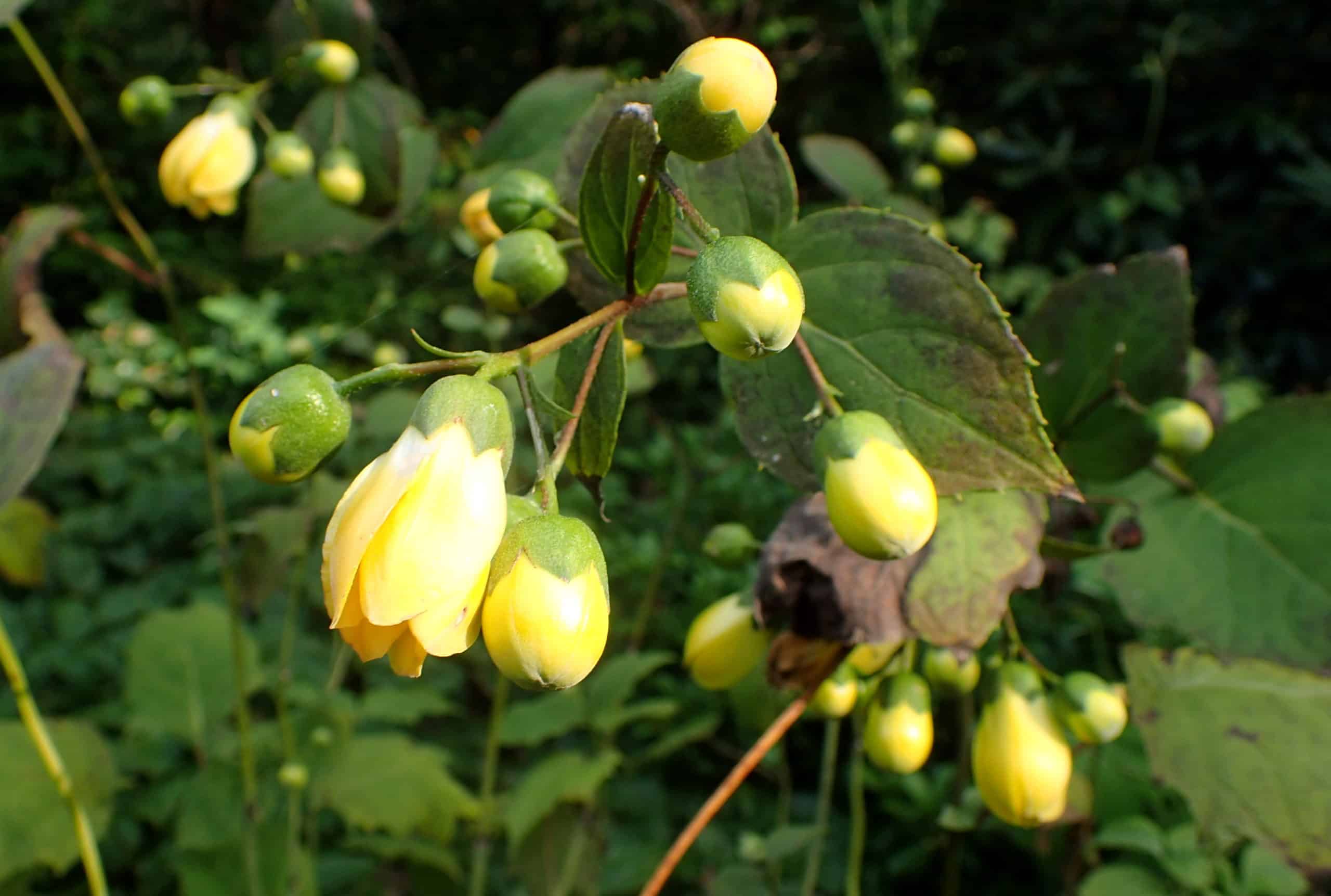
Yellow Wax Bells, also known by their scientific name Kirengeshoma palmata, are a fascinating species of flowering plants that capture the attention of botanists and gardening enthusiasts alike. These beautiful perennials are native to the mountainous regions of Japan and Korea and are renowned for their unique characteristics and vibrant yellow flowers.
In this article, we will delve into the extraordinary world of Yellow Wax Bells and uncover 10 intriguing facts about these stunning plants. From their historical significance to their impressive growth habits, we will explore all there is to know about Yellow Wax Bells and their enchanting beauty. So, buckle up and prepare to be amazed by these remarkable flowers!
Key Takeaways:
- Yellow Wax Bells are vibrant, shade-loving plants native to East Asia. They attract pollinators, bloom late summer to early fall, and have medicinal uses, making them a unique and valuable addition to any garden.
- With their stunning yellow blooms, deer resistance, and low maintenance, Yellow Wax Bells are perfect for adding color and beauty to your garden while creating a welcoming environment for beneficial insects.
Vibrant Yellow Blooms
Yellow Wax Bells, scientifically known as Kirengeshoma palmata, are renowned for their stunningly vibrant yellow flowers. These bell-shaped blossoms add a pop of color to any garden or landscape.
Shade-Loving Plants
Yellow Wax Bells thrive in shady areas, making them a perfect choice for gardens with limited sunlight. They can brighten up those darker corners of your outdoor space.
Native to East Asia
Originally hailing from East Asia, Yellow Wax Bells are found in regions such as Korea, Japan, and China. They have been cultivated for centuries for their beauty and unique characteristics.
Deer Resistant
One of the remarkable traits of Yellow Wax Bells is their ability to deter deer. These plants have a natural defense mechanism that keeps deer from feeding on them, ensuring their continued growth and beauty.
Attracts Pollinators
The vibrant yellow blooms of Yellow Wax Bells act as a magnet for pollinators such as bees and butterflies. By planting these flowers, you can create a welcoming environment for beneficial insects in your garden.
Late Summer to Early Fall Blooms
Yellow Wax Bells bloom from late summer to early fall, providing a burst of color when many other plants have finished flowering. This makes them a valuable addition to extend the beauty of your garden into the autumn months.
Low Maintenance Plants
Yellow Wax Bells are relatively low maintenance, making them suitable for both experienced gardeners and beginners. They require minimal pruning and are not prone to many pests or diseases.
Medicinal Uses
In traditional medicine, Yellow Wax Bells have been used for their medicinal properties. Extracts from the roots of these plants are believed to have anti-inflammatory and analgesic effects.
Beautiful Foliage
While the vibrant blooms steal the show, Yellow Wax Bells also have attractive foliage. The large, lobed leaves have a glossy texture and add visual interest even when the plant is not in bloom.
Grows in Clumps
Yellow Wax Bells have a clumping growth habit, forming dense clusters of plants. This makes them ideal for creating borders and filling in garden beds, adding a touch of elegance and structure.
Conclusion
In conclusion, Yellow Wax Bells (Kirengeshoma palmata) are truly remarkable plants that have a lot to offer. Their unique features, beautiful blooms, and fascinating facts make them an excellent addition to any garden or landscape. From their ability to thrive in shade to their medicinal properties, Yellow Wax Bells are a versatile and valuable plant species.Whether you’re a gardening enthusiast or simply appreciate the beauty of nature, exploring these extraordinary facts about Yellow Wax Bells can deepen your understanding and appreciation for these stunning plants. So why not consider adding Yellow Wax Bells to your garden and enjoy the vibrant beauty they offer?
FAQs
Q: What is the ideal growing environment for Yellow Wax Bells?
A: Yellow Wax Bells thrive in partial to full shade and prefer moist, well-draining soil. They are best suited for USDA hardiness zones 4-8.
Q: How tall do Yellow Wax Bells typically grow?
A: Yellow Wax Bells can reach a height of 2-3 feet and have a spread of 1-2 feet.
Q: When do Yellow Wax Bells bloom?
A: Yellow Wax Bells bloom in late summer to early fall, usually from July to September.
Q: Are Yellow Wax Bells attractive to pollinators?
A: Yes, Yellow Wax Bells are known to attract bees, butterflies, and other pollinators with their nectar-rich flowers.
Q: Can Yellow Wax Bells be grown in containers?
A: Yes, Yellow Wax Bells can be grown in containers as long as they are provided with adequate moisture and shade.
Q: Are Yellow Wax Bells deer-resistant?
A: While Yellow Wax Bells are generally considered deer-resistant, hungry deer may still nibble on them occasionally.
Q: Do Yellow Wax Bells have any medicinal uses?
A: Yes, in traditional medicine, the roots of Yellow Wax Bells are used to treat arthritis, inflammation, and digestive issues.
Q: How can I propagate Yellow Wax Bells?
A: Yellow Wax Bells can be propagated through division or by taking stem cuttings in late spring or early summer.
Q: Are Yellow Wax Bells invasive?
A: No, Yellow Wax Bells are not considered invasive. They are relatively low-maintenance plants.
Q: Can Yellow Wax Bells be grown alongside other shade-loving plants?
A: Yes, Yellow Wax Bells pair well with other shade-loving plants, such as ferns, hostas, and astilbes.
Was this page helpful?
Our commitment to delivering trustworthy and engaging content is at the heart of what we do. Each fact on our site is contributed by real users like you, bringing a wealth of diverse insights and information. To ensure the highest standards of accuracy and reliability, our dedicated editors meticulously review each submission. This process guarantees that the facts we share are not only fascinating but also credible. Trust in our commitment to quality and authenticity as you explore and learn with us.
